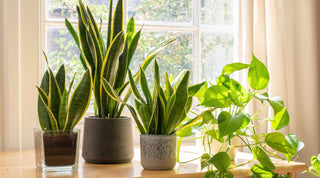Lavender, with its enchanting fragrance and beautiful hues, is a must-have for any garden.
This perennial plant is not just aesthetically pleasing but also offers a multitude of benefits and uses that can enhance any outdoor space.
👉 Seeds we like: Lavender Seed Collection
Benefits of Growing Lavender
Aesthetic Appeal
Lavender is renowned for its vibrant purple flowers and silvery-green foliage, making it a visually striking addition to any garden. It can create stunning borders, fill bare spots, and add a splash of color to a monochromatic landscape.
Soothing Fragrance
The soothing scent of lavender is widely known for its calming and relaxing properties. Having lavender in your garden means you have a natural, fragrant retreat to unwind in after a long day.
Attracts Pollinators
Lavender is a magnet for beneficial pollinators like bees and butterflies. These creatures play a crucial role in your garden's health by aiding in pollination, ensuring your garden stays vibrant and productive.
Low Maintenance
One of the best things about lavender is its low maintenance. Once established, it requires minimal watering and care, making it perfect for busy gardeners or those in drier climates.
Uses of Lavender in the Garden
Culinary Delight
Lavender isn't just for show; its flowers and leaves can be used to add a unique flavor to dishes. From lavender-infused desserts to savory dishes, the possibilities are endless.
Natural Pest Repellent
Lavender’s strong scent is not just pleasant for us but also acts as a natural deterrent for pests. Planting lavender near vegetable patches can help keep unwanted insects at bay.
Medicinal Uses
The therapeutic properties of lavender have been valued for centuries. It’s used in aromatherapy for stress relief, and its oil can be used for treating minor burns and insect bites.
Crafting and Decoration
Dried lavender can be used in various crafts like wreaths, sachets, and potpourris. It adds both visual appeal and fragrance to your home decor.
Growing Lavender Successfully
Choosing the Right Variety
Several varieties of lavender are available, each suited to different climates and uses. Popular varieties include English lavender (Lavandula angustifolia), known for its strong fragrance, and French lavender (Lavandula stoechas), with distinctively shaped blooms.
Optimal Growing Conditions
Lavender thrives in full sun and well-drained soil. It prefers a slightly alkaline soil pH. Ensure your lavender plants get at least 6 hours of sunlight daily for optimal growth.
Planting and Care
Plant lavender in spring or early fall. Space the plants about 2 to 3 feet apart to ensure good air circulation. Water the plants sparingly, as lavender prefers drier conditions. Once established, it requires minimal care, making it a great plant for xeriscaping.
Pruning and Harvesting
Pruning is essential for maintaining a compact and healthy plant. Trim the plant after flowering to keep it in shape. Harvest lavender when the buds are formed but before they fully open for the best fragrance and longevity.
Conclusion
Incorporating lavender into your garden is a decision you won’t regret. Its versatility, ease of care, and the myriad of benefits make it a perfect choice for gardeners looking to add both beauty and functionality to their outdoor space. Whether you are a seasoned gardener or just starting, lavender is a delightful addition to any garden.
With lavender, you are not just planting a flower, you are cultivating a multi-purpose gem that will enrich your garden in countless ways. So why wait? Let lavender transform your garden into a haven of beauty and tranquility.



